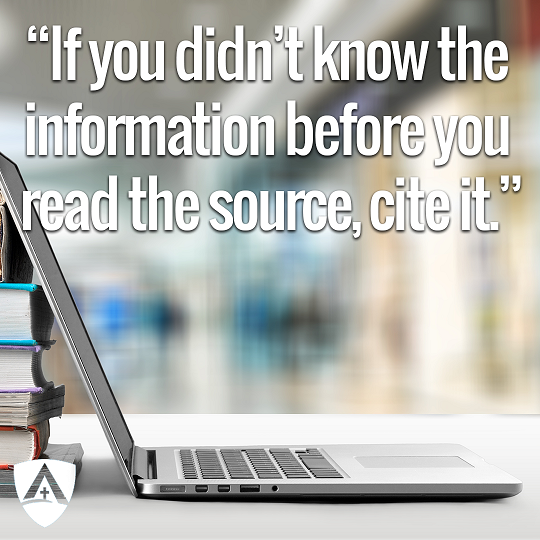Writing Process: Rewriting, Revising, Editing and Formatting
STEP 9: REWRITING, REVISING, EDITING
Many students see the process of revision as an unnecessary bother, and rarely do more than correct a few spelling errors. I get it. There comes a point where you just want to turn in the paper, but the truth is that every paper can use some serious rewriting. I personally love this process, because it allows me to move the paper closer to how I imagined it and communicate more clearly.
This is the sixth entry in a series concerning the writing process. You can review the entire series at this link.
 First, some definitions:
First, some definitions:
- Rewriting: Reorganizing the different parts of the paper, adding additional text, rewriting sections for greater clarity. Basically, making some big-scale changes. This is more than moving a sentence here and there. This can be as big as moving a whole paragraph, or even writing a whole new introduction.
- Revising: This is often part of the rewriting process. In this part of the process you will check over your thesis statement and supporting ideas. Is everything clear? Is everything where it should be? Do you need to explain more (yes, you do!). This is also where you will make sure your paper flows well. You might need to add transitions (both phrases and sentences). Does one idea lead well into the next?
- Editing: This is literally the last step. This is where you check your spelling, grammar, and formatting. This is also a good time to check your tone. In general, academic writing needs to be fairly formal. This means no subjective language and self-references (i.e. “I”, “you”, “we”). It also means that it shouldn’t sound chatty and you should avoid sounding like you are having a conversation with a friend.
Before you turn in your paper, always, always read it out loud. Spellcheck is great, but it doesn’t catch everything. You will hear your own errors if you read your paper out loud, and you will also hear the parts that don’t flow well. If you have to pause or trip over a phrase, that’s a good indication you need to change it.
STEP 10: FORMATTING
Start by knowing the requirements. Your teacher should provide the specifics about formatting requirements, or at least tell you if you need to use MLA, APA or another format. One of the best style guides for either of these is Purdue Owl . I have a B.A. in English and an M.A. in Teaching English as a Second Language, and I still use this site for easy reference. I like the website, because it has both instructions and examples.
The second part of formatting is knowing how to use a word processor. So I’m going to show you. This section will use Microsoft Word to show:
- Setting font and font size
- Margins
- Spacing
- Page numbers and headers
- Eliminating extra spaces before or after you start a new line.
- Hanging indent
- Saving and document names
- Organizing files
 Formatting Style
Formatting Style
The reason to use a specific style is consistency. If you follow a known style, any person who knows that style can figure out where you got your information. It might not feel like it, but citations in a specific format are more efficient and are generally aimed at taking up less space.
The most common formatting style used in high school is MLA. MLA has very specific requirements for citations. They are a little bit complicated, but they are also consistent. The key to Works Cited citations is punctuation and italics. You must put the information in a specific order, and remember where to put which punctuation marks, and which parts should be in italics.
Parenthetical citations are very simple. The hard part is the placement. First, parenthetical citations are required for all quotes, BUT ALSO any time you use a specific piece of information you got from a source. Here’s a good rule of thumb: if you didn’t know the information before you read the source, cite it. When the parenthetical citation comes after a quote, it comes after the quotation mark, but before the period mark. If you are citing a specific fact, the parenthetical citation goes at the end of the sentence. If all of the information in a paragraph comes from a single source, the parenthetical citation comes at the end of the last sentence of the paragraph.
Read the final installment in this series: Bonus: Conducting and Using Research

